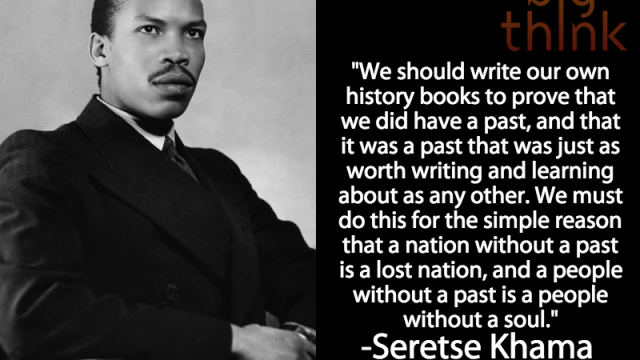Making Your Body Language Work For You

There’s a tendency to think of body language as an aspect of communication that gives us away – reveals our true meaning. We consider words more manageable, more under the control of cognition, whereas body language escapes or leaks. Often body language does function this way. Yet, it can also be used much more consciously and strategically.
One of the best examples I have of how strategic nonverbal expression works came from interviewing an international business attorney about his negotiation strategies. When other people might rant and rave, he told me, he’s more likely to quietly look at whoever has offended him or proposed too low an offer, not in their eyes, but somewhere that makes them change their tune – at the bridge of their nose.
“If you’re ever eyeballing someone down, never look into his eyes,” he told me. “Look at the top of the nose. Don’t wince. They get the impression that you’re staring at them and they turn their eyes down more quickly. You have to practice it.” He added, “It’s funny that if someone is more vociferous or forceful, they think they’re making progress, but I make more progress staring at their nose. It weakens these people. They won’t raise their eyes. It’s a way of downing a guy without shouting at him.”
Part of the power of this technique is that it is deniable. In fact, that is why nonverbal strategies are often so effective. If someone responds with, “What was that look about?” denial is possible in the form of “Oh, I was confused for a moment,” “I was thinking about what you just said,” or “I do that sometimes when confused.”
This attorney usually is buying time with the nose-stare technique, and may be confused or thinking hard when applying it. The most honest reply would be, “I’m staring at your nose to unsettle you,” but as with much of our daily communication other plausible explanations are more socially acceptable and thus more often applied.
Not all of us are inclined to strategize in this way. It may simply seem too manipulative. The story makes the point, however, that nonverbal behaviors can be used to manage interactions that aren’t proceeding as desired. Crossing your arms on a desk and learning forward somewhat when someone has said something a tad offensive or insulting can signal that they might want to revisit and rephrase what was just said. A direct look in the absence of words can halt or change conversational tone or direction. Tapping with one finger or using four repeatedly (pinky first, then the next three fingers) to signal aggravation often works for people with authority or the upper hand in a relationship.
What does this mean in terms of using nonverbal behaviors strategically? First, it means that unless you’re thinking in those terms such behaviors can more readily be used to manage you. But equally important is the loss inherent in limiting communication management to mostly verbal expression and letting the chips fall where they may with regard to nonverbal expression. It’s much like trying walk without the full use of both legs — doable, but hardly optimal.
The first step is raising awareness to your inadvertent and intentional nonverbal expressions, fleeting (micro-expressions) and ones of longer duration or emphasis. Women, for example, have a tendency to smile more often than men. There’s nothing inherently wrong with this. But, when trying to make an important point to be taken seriously by others, smiling instead of corroborating verbal concern with a consistent nonverbal expression undermines the desired outcome. Women taking on leadership often train themselves to lower the tone of their voices and/or raise the volume.
Silence can be used strategically, accompanied by expression or body stance, to indicate such states of mind as patience, puzzlement, discontent, consideration of a reply, surprise, or stifling anger. Silence can be unsettling and therefore useful when others are expecting a different reaction. It has the added advantage of buying time. So much of what occurs in communication is reactive to what came before. Silence interrupts that.
Especially useful is learning how the way you communicate undermines the content. Contrary to the problems of those who constantly smile are those of overbearing people seemingly confident about whatever they say. Their demeanor suggests superiority and generates resistance. They’re often oblivious to gestures and tone so undermine what they wish to achieve.
I once worked with a senior executive whose employees thought he was “slick.” It wasn’t until we videotaped him and he saw how his smiles were poorly timed and often looked like smirks that he realized why this interpretation kept occurring.
While easier said than done, removing much nonverbal behavior from automatic to manageable range can go a long way toward improving communication. None of us controls all of our communication behavior, but leaving too much to chance or bad habit is a sure way to be consistently misunderstood.
Kathleen also blogs on communication here.
photo: Refat/Shutterstock.com





